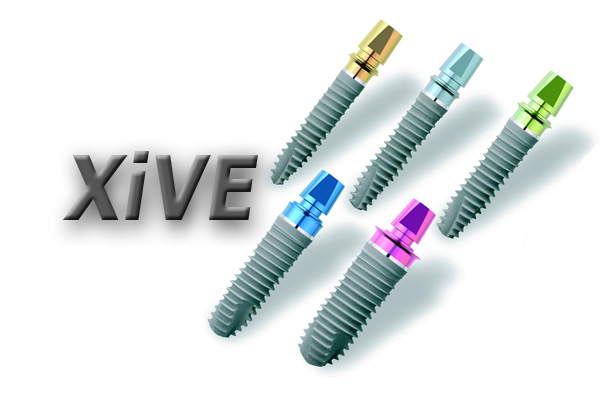
Next you will learn:
- What are the important practical aspects of XiVE dental implants, and what does this give the end user - the patient;
- What are the main advantages of XiVE implants and what is useful to know in advance about their disadvantages;
- Is it possible to install these implants immediately after tooth extraction, excluding the stage of walking for several weeks with a “hole” in the dentition;
- Do XiVE implants take root well and what are the statistics of their rejection for one reason or another;
- Why does the manufacturer give a lifetime warranty on these implants, and clinics - only about 2 years;
- What price does prosthetics on Xive implants cost?
The Germans have long been famous for their quality products, and products for dental implantation are by no means an exception. In particular, in Germany, XiVE (Xive) dental implants are produced, which are widely used today in Russian dentistry.
But let's try to figure out if these implants are really so good - why, in fact, dentists praise them, and indeed, what is so special about them, compared, for example, with middle-price implants? .. Simply put, but there are whether it makes sense to overpay for expensive German implants, and whether this can give any practical benefit.
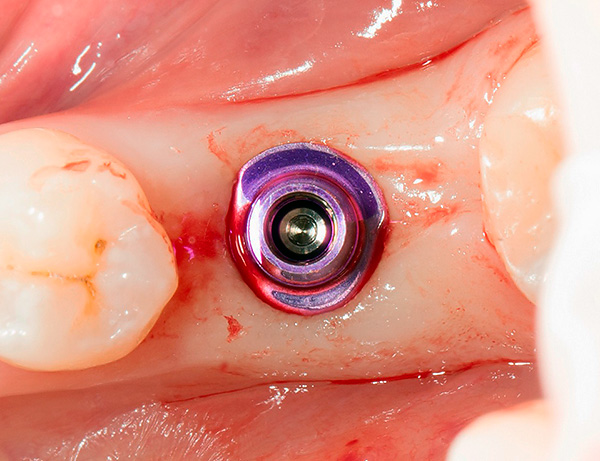
On a note
XiVE implants (by the way, as well as quite popular Ankylos and Astra Tech implants) are produced by the concern - Dentsply Friadent. The company is quite well-known and has existed on the market for more than 100 years, and the term of work in the field of dental implantation is also impressive - about 40 years. In general, dental implantation itself, as a science and as a practical activity, has existed a little longer, having appeared in the 60s of the last century, so we can say that the Dentsply concern is one of the founders of the development of this direction. Perhaps only the company Nobel, which began to produce the first implants in the world under the control of their direct creator, Dr. I. Branemark, will be older.
Today, Dentsplay has more than 20 production centers, its products are represented in hundreds of countries around the world, and Russia is no exception. XiVE implants are really very popular, despite the relatively high price.
In total, the following XiVE implant models can be found in the Dentsply catalog:
- XiVE S plus - models for classic two-stage implantation;

- XiVE TG - implants for the so-called transgingival implantation, which is positioned as carried out without gum cuts, by a puncture method (it is useful to bear in mind that in fact, implanting teeth without gum cuts is a kind of advertising ploy, because the cut is still made - it’s just not longitudinal, but circular, therefore more gentle and does not require suturing);

- As well as XiVE 3.0 - are used in the presence of problems with bone tissue, a narrow alveolar ridge, as well as when implanting the front teeth.

The company also offers tools for installing these dental implants, abutments and software that automates the planning and treatment process.
Now let's look at the most important technological features of XiVE implants - that is, exactly what turns an ordinary titanium screw into a product that is very thoughtful in terms of engraftment in bone and aesthetics.
Important features of XiVE implants
The more expensive a dental implant is, the more useful it is, as a rule, in it. Sometimes the differences may seem insignificant (say, the presence of trace elements in the titanium from which the product is made), and sometimes these differences are quite obvious - for example, the nature of the thread on the implant. Anyway, when the implantation has already been carried out, every little thing can have a decisive influence on whether an extraneous, in fact, metal structure in the jaw bone will survive, or if inflammation of adjacent tissues and implant rejection begin.
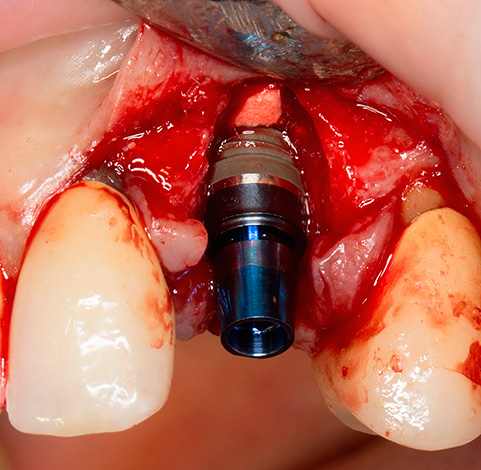
So, let's see how XiVE implants are doing with this, what technological advantages they have and, most importantly, what this gives to end users - patients of dental clinics.
Using pure titanium
Titanium is considered a metal that is fully compatible with our body, that is, under normal conditions, is not rejected. This property has been noticed for a long time and today it is widely used in surgery, and far from being used only for dental implants - implants made of pure titanium do not cause allergic reactions, regularly serve and do not tear away for decades.
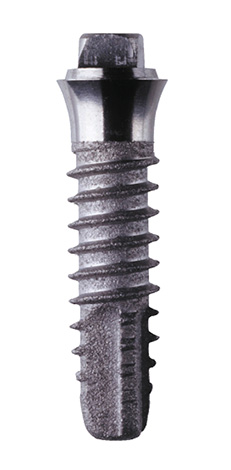
Meanwhile, a number of some implant manufacturers use an alloy of titanium with aluminum and vanadium (Ti-6Al-4V), which today refers to first-generation biomaterials (in other words, the material is considered obsolete, and today it is used less and less).
On a note
Some experts are inclined to believe that vanadium in the alloy causes a toxic effect on living tissues, and Ti-6Al-4V alloy has lower adhesion to tissues than pure undoped titanium.
Xive implants use only pure titanium. Well, this, of course, is a plus, but it is worth noting that the implants and many other brands are also made of pure titanium, including products of the middle price category, and even the “economy” category.
Special implant thread
An important structural feature of Xive implants is their specific thread. Generally speaking, most modern dental implants resemble threaded screws in appearance: it can be quite shallow, or, conversely, aggressive, or combined, that is, different in different parts of the implant.
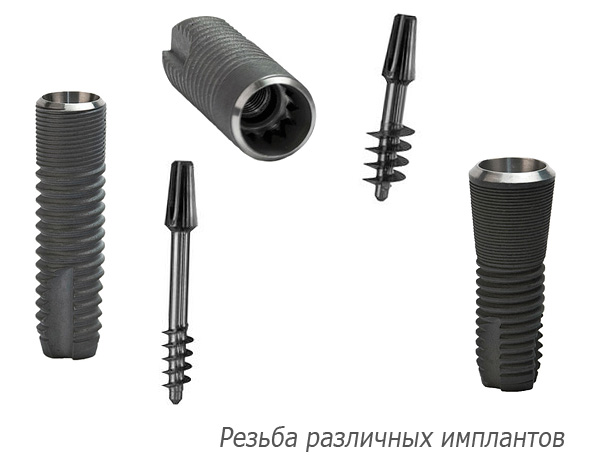
For XiVE implants, the thread is combined: in the apical part, that is, at the apex, it serves for cutting bone tissue, in the center and at the base the thread is finer and less deep, which is necessary for accurate bone compaction (condensation).
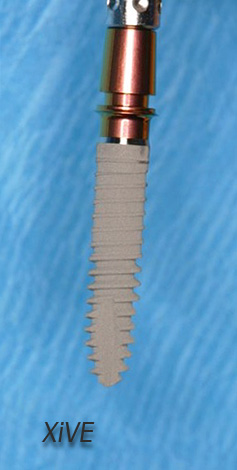
On a note:
In practice, the implant is screwed into the bone, like a self-tapping screw into a tree. Before this, a bed is formed, and its diameter is somewhat narrower than the diameter of the implant. And the task of a good, thoughtful thread is to allow the implant to be screwed in such a way that the adjacent spongy bone is optimally compacted. As a result, the so-called compression effect is achieved - if the bone around the implant is sufficiently dense, then the structure will be securely fixed immediately after installation.
In fact, the influence of thread on the successful engraftment of an implant and its further service is much wider. Everything is important here: the thread pitch, its angle of inclination, depth and other parameters.
In general, it can be noted that the carving of Xive implants is, so to speak, their strength. Without going into details, let’s say that a lot of “copies were broken” (research conducted) before the existing type of thread was chosen. And this, by the way, is one of the explanations why XiVE implants have such a high engraftment process, both immediately and in the long run - however, we will talk about this a little later.
Porous surface
It has long been the norm that dental implants do not have a smooth surface, but a porous one - this is necessary for better implant fusion with the bone. Moreover, as in the situation with threading, each of the large companies offers its own technology for the formation of this same porosity (mainly acid etching and sandblasting with particles of abrasive substance).
Xive implants, for example, are coated with FRIADENT plus: after manufacturing, the titanium “screw” undergoes an abrasive treatment and acid etching. As a result, micropores form on the smooth surface of titanium metal, and the effective area of the product increases significantly.
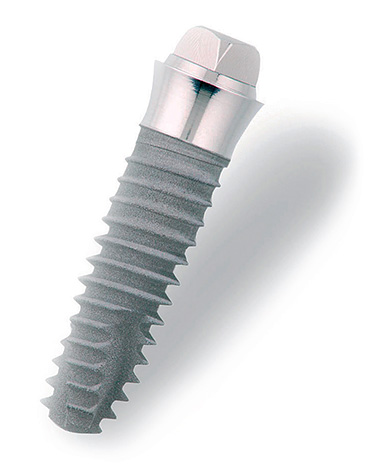
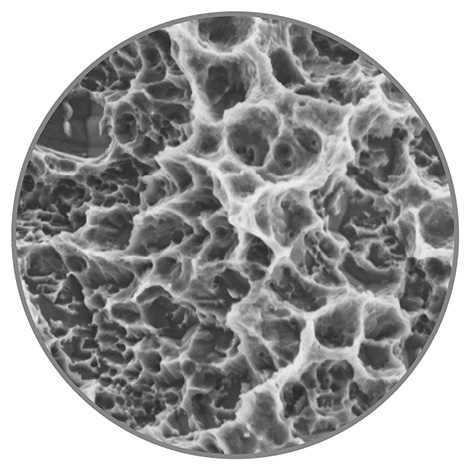
Why does an implant need a porous surface?
When installing the implant, the bone tissue is quite injured, but then gradually begins to recover.Its growing cells penetrate into the micropores of the implant surface - thus, the bone literally grows into titanium and becomes one with it. This process is called osseointegration (the connection of the implant and bone tissue).
In particular, the manufacturer claims that the patented FRIADENT plus technology allows bone tissue to grow at an accelerated rate, as a result of which the healing rate of XiVE implants can be 1.5-2 times higher than that of a number of competitive products.
Indeed, an important advantage. However, it should be borne in mind that competitive products are used here, first of all, for some economy-class implants, since special treatment of the surface of implants, as it were not called, is today characteristic of many brands, and is no longer a novelty.
Hex implant and abutment connection
And again, although advertising can present this type of implant and abutment connection as revolutionary, today it is a classic connection that is used by many manufacturers of dental implants.
On a note
An abutment is a transitional part between the implant itself, implanted in the jaw, and the prosthesis that is installed on this implant. The longevity of the entire structure may depend on how well and firmly the abutment is attached to the implant (and prosthesis).
A feature of the XiVE models is perhaps in the relatively deep arrangement of the internal hexagon. This ensures reliable fixation of the abutment; it really fits very tightly, without micro-gaps. And this, in turn, protects against bacteria and food debris from entering the mouth.
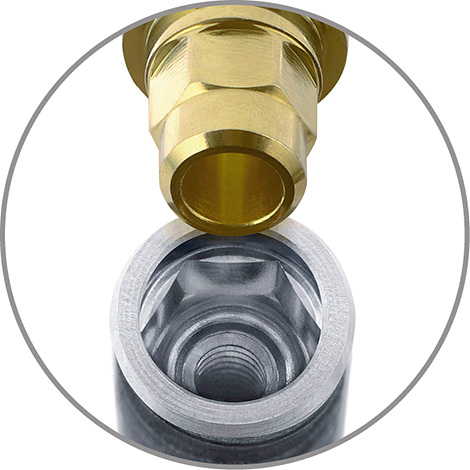
Xive implant prosthetics - what does the patient actually pay for?
Speaking about the features of dental implants as a whole, it is worth noting that these or those of them become popular only with a combination of a number of factors, including through advertising. However, the crucial point is always how well the implant integrates into the bones. (it is especially important how the design behaves a few years after installation), as well as how easy and convenient it is for dental implants to work with the appropriate implant system.
So, in this regard, many practitioners note that XiVE implants are not only well-established (according to statistics, the percentage of survival is 99.6%), but also one of the most comfortable to work with.
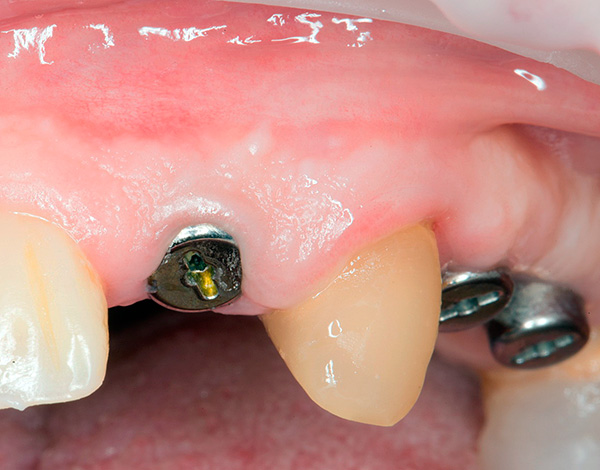
Implantologist review of XiVE implants:
“In the implantation system, everything should be thought out to the smallest detail - each cutter, each boron must exactly match the implant design. In addition, it is important that the product itself is placed in an individual protective flask, which can be easily and quickly opened - literally in a second, because time goes on, the wound is open, microbes cannot be launched into it, so you need to spend as little time as possible opening the package. Color coding also plays an important role - each Xive model has its own. This is an additional guarantee that the implantologist will not be mistaken and will choose the implant necessary for a particular patient ... "
Well, it’s convenient for doctors to work with XiVE implants, but what does the patient get? Simply put, why does a person pay money by installing these rather expensive German implants? Well, there really are many important points that are far from obvious to an unprepared person.
For example, it is important that Xive implants provide a very high aesthetics for prosthetics. The aesthetics are primarily affected by the location of the gums - it is necessary that they naturally border the tooth, the contour of the mucosa should be smoothly rounded.With regard to XiVE implantation, this is achieved by the presence of a smooth neck of the implants, which fits tightly and without gaps to the soft gum, as well as well-designed abutments.
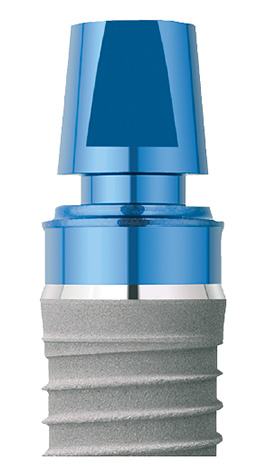
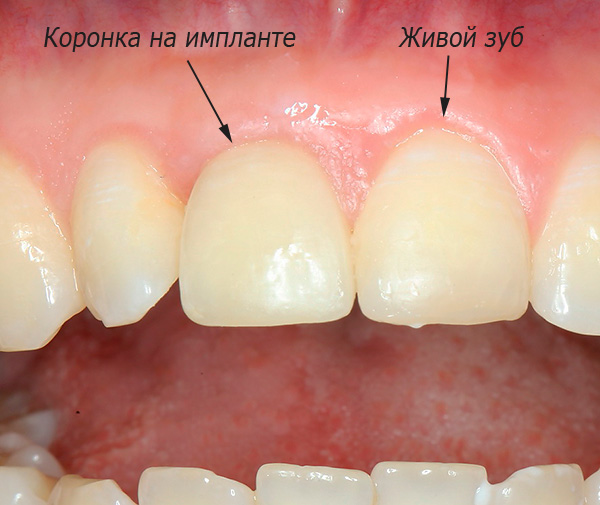
In general, the company catalog contains a rather large assortment of abutments, which can greatly facilitate the patient’s life:
- TempBase temporary abutments: they can be fixed right after the implant is inserted into the bones and a temporary tooth prosthesis can be made right there (using the indirect method, that is, simply extend the tooth directly in the dentist’s chair). As a result, the patient can leave the doctor’s office with a new tooth, and you won’t have to walk with a “hole” in the dentition for several weeks;

- CERCON Abutments: Created from zirconia, a very durable inert material that is white in color. Such abutments are well suited for aesthetically significant areas - for example, for implantation of the front teeth, because otherwise the gray titanium abutment could be visible under the crown of the same zirconium dioxide. But the classic titanium abutments, which are also present in the XiVE catalog, are recommended mainly for prosthetics of teeth that are not in the smile zone. The photo below shows zirconia abutments and, for comparison, titanium abutment;

- Abutments for bridges and removable dentures FRIADENT MP - they allow you to mount dental bridges or dentures, consisting of several crowns at once;
- It is also worth noting the individual AuroBase abutments - are created for a specific patient. This option allows you to achieve even greater naturalness and naturalness when prosthetics than even when using abutments made of zirconium dioxide.

Actually, XiVE implants are only a part of this implantation system, and besides abutments, this also includes many other important components, up to the software that serves to visualize and plan the implantological treatment process. And all this, of course, also contributes to the final price of treatment.
Feedback:
“Still, I decided to install xive implants. At first the price was embarrassing, somehow a little expensive, but then I did not regret it at all. After installation, nothing hurt, the implant took root, despite the presence of periodontal disease. The gums at that time were not in very good condition. And nothing, they’ve been standing for 3 years already, I chose zirconium crowns on them. Since I give a lot of money, so fully that the result was the best ... "
Ivan P., St. Petersburg
A few words about the pros and cons of XiVE dental implants
If we summarize and filter out the “advertising noise”, we can distinguish the following advantages of Xive dental implants, which are really important in practice:
- reduced terms of implant engraftment;
- there is the possibility of good fixation even in a relatively loose and small bone volume (for example, this can be especially important in the case of dental implants for periodontitis or periodontal disease);
- a sufficiently high primary stability of the implant (as a result, there are fewer fears that during a meal it accidentally displaces before it has even fused with the jawbone);
- the implant can be installed simultaneously with tooth extraction and immediately loaded with a prosthesis (the implantation technique with immediate loading will be discussed below);
- it is possible to achieve a truly high esthetics with prosthetics;
- it is possible to accurately predict the result of prosthetics on XiVE implants using computer simulation of the treatment process;
- judging by the reviews of both dentists and the patients themselves, recovery after treatment is quite comfortable and usually without complications;
- in some cases, the possibility of prosthetics immediately after installing the implant is important (this is especially true for prosthetics of the front teeth, because no one will want to go without them for a long time).
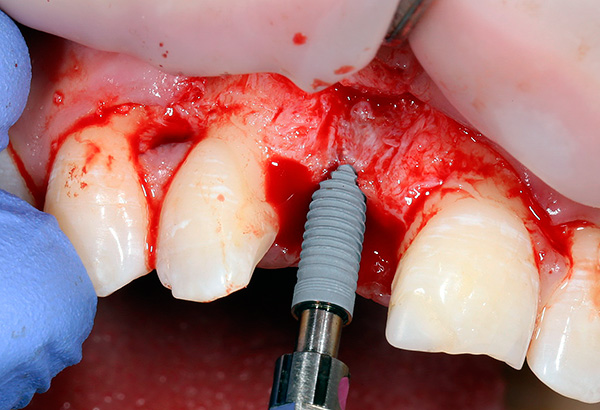
But XiVE implants also have certain disadvantages, which include, first of all, the relatively high cost.Not many patients are willing to pay for the installation of one implant from 30 thousand rubles or more (different clinics offer, of course, a different price - somewhere else they will ask for XiVE implants and much more). But you also have to buy an additional prosthesis, the cost of which can be several tens of thousands of rubles.
In addition, due to the high cost of XiVE implants, not every clinic works with them, and it is possible that you will have to work hard before you find dentistry in your city where prosthetics can be performed on these implants.
Review by a practitioner:
“There is no perfect implant system and implants that can solve all problems at once. For example, about the same XiVE, I can say that they are great for restoring large molars in case of immediate implantation. And in the smile zone, I would prefer Astratech.
The truth is that with proper experience, you can achieve a good result with both inexpensive and highest-cost implants. Therefore, the recommendation for patients is to choose a doctor first, and after that - implants. ”
XiVE implant placement immediately after tooth extraction
It is important to understand that immediately after the extraction of the tooth, the slow but irreversible process of atrophy of the bone tissue of the jaw in the healing hole begins. This happens for the simple reason that the bone here ceases to receive sufficient chewing load.
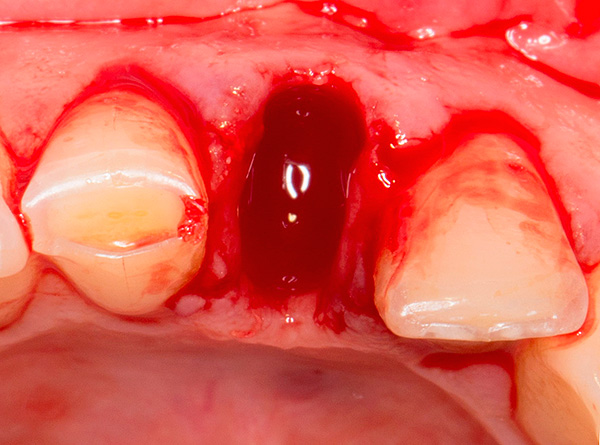
This process proceeds most dynamically in the first 2-3 months after tooth extraction, and after 3 years you can lose up to 60% of the initial volume of bone tissue. Well, since there is no bone tissue, then there will be nothing to install an implant in. In such cases, if you still want to install the implant, you will need to first increase the volume of the bone by performing an osteoplasty (or mucoplasty) operation.
And here a quite reasonable question arises - why carry out additional operations when bone tissue can be used in its original volume by installing an implant in the well of a tooth just removed?
Moreover, this would save a lot of time compared to classical two-stage implantation, when first you would have to wait for the healing of the hole.
It is not surprising that the technique of so-called immediate implantation (when an implant is inserted into the jaw immediately after tooth extraction) is becoming increasingly popular today. And XiVE implants, according to a number of practicing implantologists, are more suitable for this technique than many other brands.
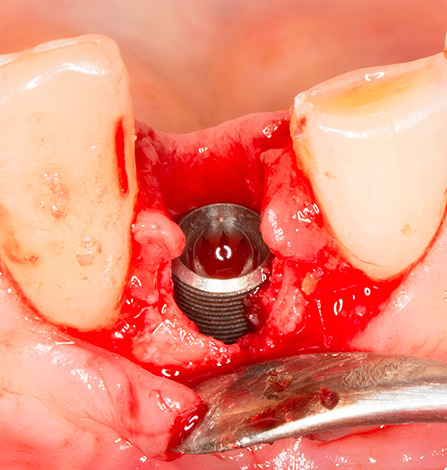
On a note
Today, there are implant models with aggressive threading, which allows for high primary stability, but involves excessive bone injury. The second type is implants with a small thread pitch and a small depth, they less injure bone tissue, but often using them implantation with immediate loading is impossible due to the low primary stability of the implant.
According to a number of experts, the “golden mean” was found in XiVE implants, that is, a small invasiveness for tissues is achieved by reducing the pitch and thread size, however, while the macrodesign of the implants allows you to achieve high primary stability in the jaw - you can proceed to prosthetics and immediately load the implant.
In general, the XiVE system, if used for immediate implantation, can highlight the following advantages:
- relatively small bone injury;
- high primary stability of the implant in the jaw;
- a low probability of jamming of the implant when screwing it into the bone (for some types of carving, this also happens);

- and finally, the possibility of instant loading of the prosthesis.
For the patient, all this means a quick and painless recovery after treatment and, importantly, getting a beautiful smile (or the ability to chew) on the same day that the bad tooth was removed.
Feedback:
“... I nevertheless trusted my doctor and chose German implants. Put Xive, two pieces, have been standing for 8 months, I feel great. Particularly pleased that they installed along with the extraction of teeth. This is a huge plus, because work does not allow me to stay even for a day with holes in my mouth. Of course, I myself saw that it was a prosthesis, but neither my colleagues nor my wife noticed the difference. Later, they replaced the temporary prosthesis with a permanent one - here is the beauty, it’s even difficult for me to notice the difference with my native teeth.
Igor, Moscow
About engraftment and average life of XiVE implants
According to statistics, XiVE implants are rejected only in about 0.4% of cases. For comparison: the percentage of implant rejection in the “average for the market” is at the level of 2%, and for some low-cost models it can reach 3-4%.
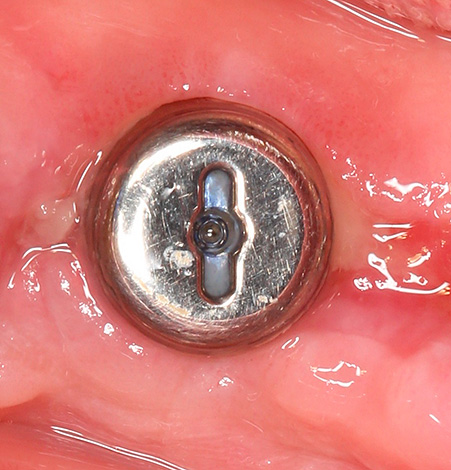
As for the life of the XiVE implants and the guarantee for them, there are nuances. So, for example, the manufacturer gives a lifetime warranty on their products (namely, implants and components for implantation). But it must be understood that the real life of even the highest quality implants depends largely on the professionalism of the doctor and, so to speak, on the adequacy of the patient.
What is required from the implantologist: professionally install the implant, taking into account all the accompanying details of the clinical situation. From an orthopedic surgeon - to correctly set the load that the structure will withstand, as well as to select a crown that will stabilize the implant in the bone, will fit snugly against it and the gum. In this case, the artificial tooth from the root to the apex will be a single unit, and bacteria will not penetrate inside it (that is, between the implant and the abutment, the prosthesis and the abutment). This means that the risk of tissue inflammation and subsequent structural rejection will be minimized.
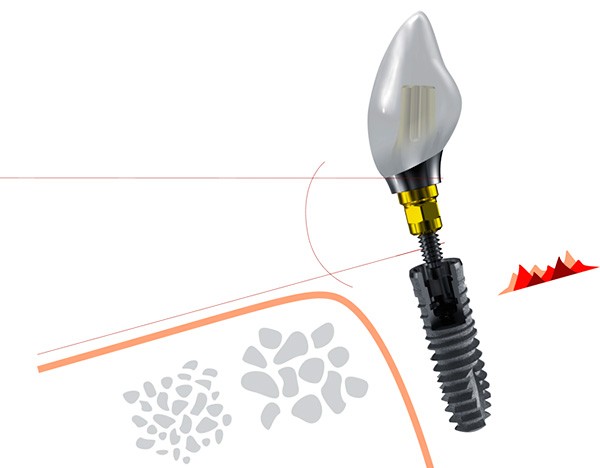
And what is required from the patient immediately after implant placement? First of all, it is important to take medications prescribed by your doctor, adhere to the prescribed restrictions (for example, gnawing nuts will not be the best solution), monitor oral hygiene, and be sure to attend preventive examinations. Such examinations will not only help the implantologist at the initial stage to identify emerging problems, but also allow you to maintain a guarantee for the treatment.
And a few more words about the guarantee - here you need to distinguish several concepts.
The first is a guarantee from the manufacturer. With regard to Xive implants, it is life-long. That is, with proper oral care and a prophylactic visit to the dentist, it is entirely possible to count on the fact that the implants will safely stand for the rest of their lives.
Another thing is a guarantee that is issued directly by a doctor or clinic. As a rule, the term of such a guarantee is only 1-2 years, and it applies specifically to implant installation services.
On a note
Statistics show that if an implant is rejected within 2 years after installation, then in about 90% of cases this is due to the fault of the doctor. Rejection of the implant during longer periods of its operation occurs most often through the fault of the patient.
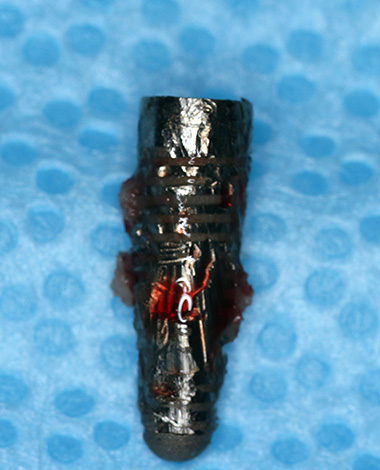
The problem is that in practice it is not always possible to find out what is the cause of implant rejection. Accordingly, it is problematic to prove that it is not the patient who is to blame, namely the doctor made a mistake during the installation.
Therefore, if you have already decided to place implants, even if it would seem so high-quality and reliable, as XiVE, it is useful to focus primarily on finding a good doctor (experienced, highly professional, with good reviews).
How much can dental restoration with German implants cost?
Although in Germany XiVE dental implants are one of the most common models, in Russia this brand belongs to the premium segment, and their price starts from 30-40 thousand rubles only for installing the implant itself. Additionally, prosthetics must also be paid.
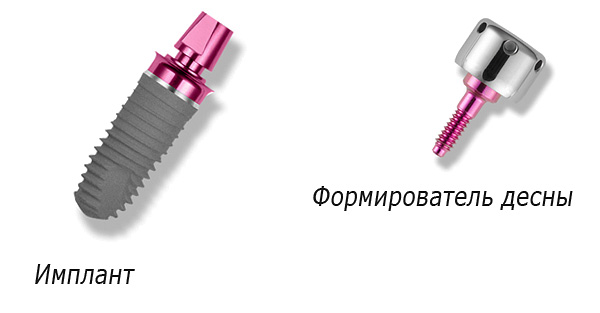
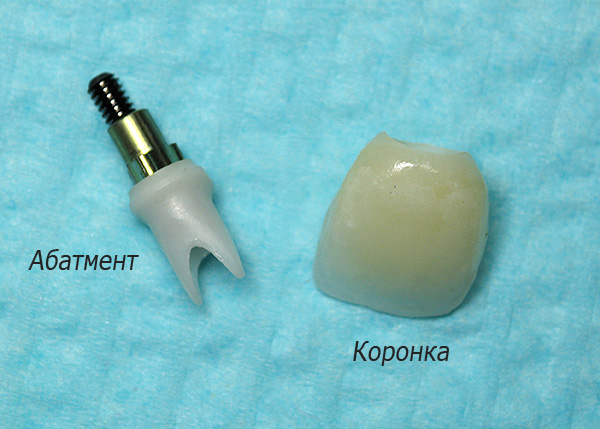
However, in fairness, it should be noted that in view of the foregoing, such a high cost can be considered quite justified.
Implantologist review:
“Friadent Xive is not a cheap system. Yes, it is cheaper than some (for example, Straumann, Astra Tech), but more expensive than many others - for example, all Israeli, Korean. At the same time, the quality of Xive implants is beyond any doubt - it’s hard to imagine that the Germans can do something poorly ... For my own practice (almost 10 years of work) of visual observation of patients, I can safely say that these implants hold well and the surrounding tissues look very wonderful. Naturalness is preserved and it is difficult to distinguish an artificial analogue from living teeth. ”
From correspondence on the forum
Those for whom the price of XiVE implants seems too high usually choose inexpensive Israeli brands (MIS, Alpha BIO) as a worthy alternative. There are also opposite situations - when the patient needs the maximum quality from implantation, in this case the choice usually falls on brands such as Nobel or Astra Tech (these are one of the most premium and expensive models of dental implants).
In conclusion, I would like to remind once again that the success of implantation depends not so much on the quality of the implant, but on the professionalism and experience of the doctor. The specialist’s “golden” hands will help to serve both expensive German and relatively inexpensive Russian or Israeli implants for as long as possible.
Be healthy!
(If you have personal experience with dental prosthetics on XiVE implants, or on implants of other brands, be sure to leave your review at the bottom of this page - in the comment box).
An interesting video with an example of installing an XiVE implant
Immediate implantation: insert an XiVE implant in a fresh tooth well

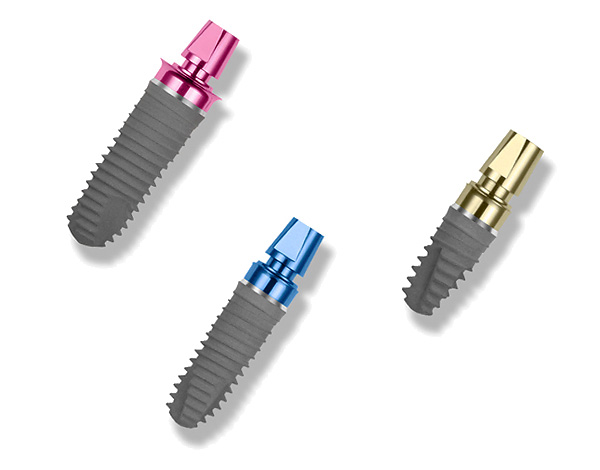
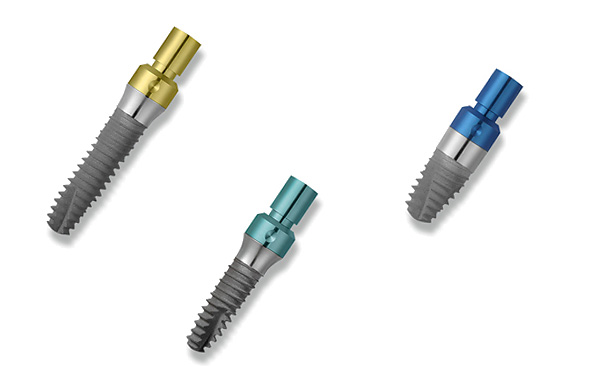
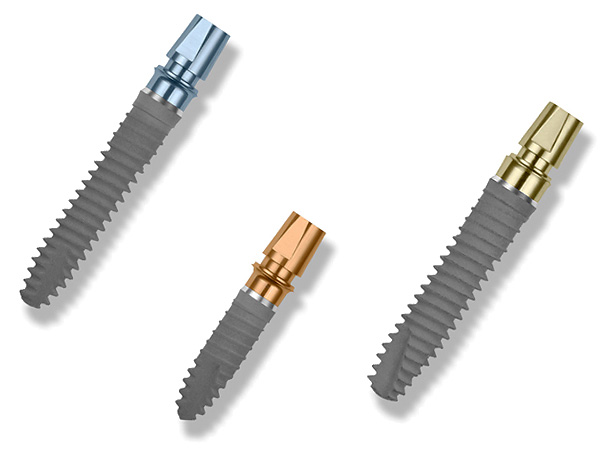
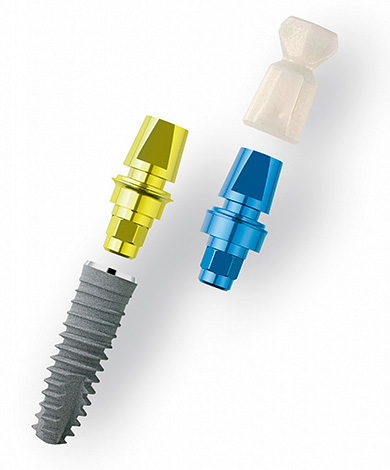
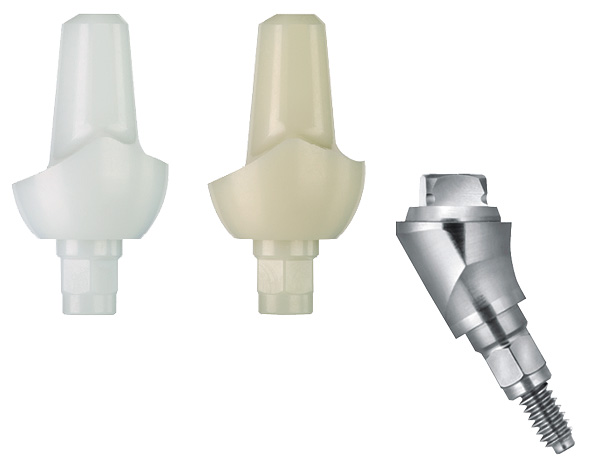
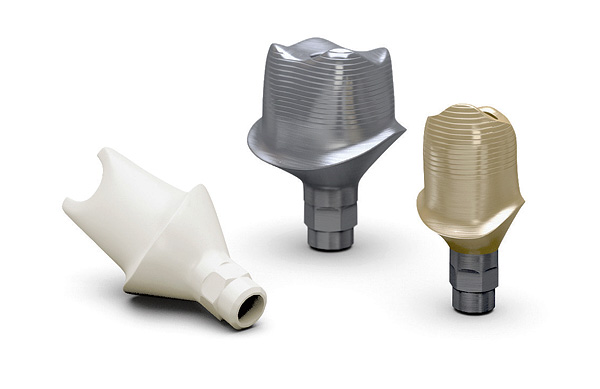
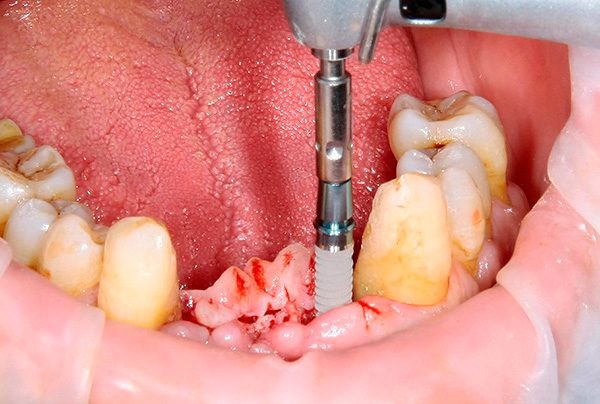
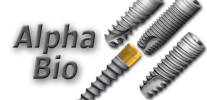
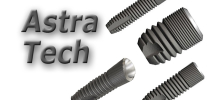
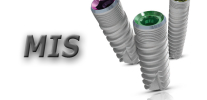
Vladimir city. In June 2015, she delivered 2 Xive implants at the top - chewing teeth. Everything has taken root perfectly, the problem with the installation of crowns: they press on the tongue, the feeling that the abutment is displaced inside the mouth, but the doctor does not see this. Grinds crowns, tongue is already exhausted. For half a year now with these crowns, I go to the clinic as if to work, and there is no end in sight. What to do, tell me?
Hello! I am sure that the problems are connected with the fact that the crowns are installed without taking into account the peculiarities of the occlusion and the anatomical features of the maxillofacial region. I think that in your case, your attending physician simply does not know what to do: removing crowns and doing it again is an unnecessary expensive work that will cost a pretty penny to the clinic, and a subcut (infusion) is just a kind of doctor’s request “not to go to you” more to him with like. " It will not give results if the crowns are incorrectly oriented in the planes, or, more simply, the spatial relationships are violated, which the orthopedic dentist should know about, otherwise the tongue, cheeks, lips, etc. may bite. I think that you just have to get at least a consultation in another clinic to clarify my suspicions again. If it turns out that you need to do it all over again, then to sue the clinic about the return of money (at least part) will be the most difficult task, since it is quite problematic to prove that the doctor did a poor prosthetics.
Tatyana, try to get the opinion of another specialist on this issue, preferably a gnatologist orthopedist, or contact the orthodontist with a question whether occlusion in the area of dental crowns is impaired. If there is such a problem, then you will need to reinstall the dental crowns using individual abutments.
Hello! Soon I’m going to put an implant, and also Xive. Tell me, if it's not a secret, in which clinic did you get a doctor and who is it? I am also from the city of Vdadimir.
Good afternoon! I installed the Xive implant two years ago (chewing tooth of the lower jaw). All is well, there were no complications, the tooth was like a native. However, she noticed that there was cyanosis of the gums, quite pronounced. It’s good that the tooth is not anterior. As far as I understood from the descriptions of these implants, the Germans should not give such an effect, in any case, not two years after installation.
In general, how can you understand which implants were installed in the clinic? Asking for “show packaging” is not always convenient ... Thanks for the answer!
Hello. Cyanosis of the gum can be caused by several reasons: 1) perhaps, it reveals the neck of the installed implant; 2) you may have an abutment visible (this is the outer part that connects the implant to the crown). In your case, it is necessary to do a radiography in the area of the installed implant, and after that it will be possible to eliminate the cause. The main thing is to understand whether everything is in order with the implant.
Regarding the brand of implants: you cannot determine the brand yourself. In the clinic you should have been given accurate information about which manufacturer the implant will be installed. This is important information for each patient. Over the course of a life, a chip may occur, and the crown may be unsealed, therefore, when contacting a doctor, it is important to have information about the brand of the implant installed.
For me, a quick healing period after installing the implant is very important, since the problem tooth is in the smile zone. But when I consulted about the procedure for installing implants with a friend's dentist, they explained to me that the process was quite long and took almost six months. First you need to remove the tooth, then wait for the healing of the gums, then install the implant and then the crown. But it turned out that the Xive implant can be installed immediately, and rehabilitation after installation is quick. Yes, more expensive, but they don’t save on this. Unfortunately, in the regions people don’t have much or less dentistry, where they use higher-quality (and as a result, more expensive) materials for prosthetics. And often the dentists themselves are not aware of new opportunities. Thanks to your information, I found clinics in our city where they work with Xive. I will improve my smile)
I agree with the previous comment. In the regions, doctors often do not know about the benefits of Xive implants, since it is quite expensive to work with them. And doctors are beginning to recommend what they work with constantly, that is, other brands. And for patients in this case, the procedure for installing an implant at a more affordable price may turn out to be more expensive, since it will require additional manipulations, for example, gum extension. Some regional clinics now offer something like “dental tourism”, when a patient can go to Moscow and solve their dental problems in a Moscow clinic with Moscow specialists in a few days. In addition, there are discounted loyalty programs in the capital, which are not available in the regions. Unfortunately, because of this reason, Xive implants are less popular and known than other brands. For residents of the regions this is not very good.
Regarding the allegedly high price of Xive implants - everything is really relative.If you compare with the implants of systems that position themselves in the economy and standard class - then yes, Xive is more expensive. But this brand belongs to the premium class! And so the price is very attractive. And here it must be borne in mind that the classiness of any product is determined primarily not by its price, but by its characteristics. These implants in some respects surpass top and more expensive brands. This is quite clearly indicated by the statistics of survival of implants of this system.
And again, not a single word about dental bone atrophy from German implants. How stronger is atrophy than from Swedish implants? Or how much weaker than atrophy from Israeli implants? Why is such an important indicator so carefully kept silent ?!
Hello, Elena! This indicator is not silent, it simply does not exist, since the presence of bone tissue atrophy and its degree depend on many reasons: the quality of the operation, the general health of the patient, patient compliance with the doctor’s recommendations, the quality of the prostheses installed on the implants, regular patient visits to the doctor hygienist, etc. Therefore, it cannot be said that, for example, bone atrophy from Israeli implants will certainly be 1.2 times greater than from German ones.